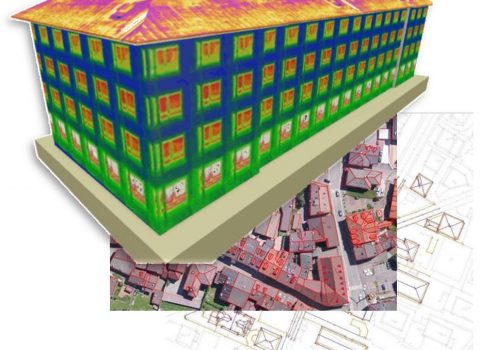
EnergIA: Artificial intelligence, made in FBK, for energy saving
Energenius is a company that deals with energy and, with the support of Fondazione Bruno Kessler, has developed a new data analysis and consumption prediction platform
Energenius is a company that deals with energy and, with the support of Fondazione Bruno Kessler, has developed a new data analysis and consumption prediction platform. An idea that reaches out to all companies that need to analyze their energy consumption, with a focus on those that self-roduce energy both to meet internal needs and sell it to the network, aiming at excellence in system management. GEM Analytics is the name of the tool available to companies, what we basically know as dashboards, that allows users to have all the information they need in a single look, so as to optimize choices in terms of energy savings (or gains). This is made possible thanks to the artificial intelligence algorithms that, integrating the energy and environmental data collected, suggest the best strategies to follow. Another aspect of frontier innovation is the use of fog computing techniques with the aim of carrying out an automated and personalized energy analysis on the specific characteristics of each customer. During the project, the GEM Analytics platform was tested in some pilot sites with the collaboration of four companies.
Analysis of cogeneration systems
Cogenerators are systems capable of producing electricity and steam at the same time. The steam can be used for building heating or for production processes, plants present in the industrial sites of Novamont Mater Biotech and of a company that operates in the agro-food sector. Two companies participated in the first use case of Gem Analytics, which focused on optimizing their cogeneration systems. In this case, the project analyzed the data provided through artificial intelligence algorithms, so as to allow companies to identify the correct settings for the optimal running of the devices based on production needs, future energy prices and weather conditions, thus obtaining a reduction in overall costs of more than 10% (over 100 thousand Euros per year).
Energy optimization in buildings
The second use case involved large services buildings as the World Join Center in Milan (shops, offices and event venues). The entire complex is spread over 20 floors, has a total height of 72 meters and a total commercial area of about 17,000 square meters. In this case, GEM Analytics was used to check system start-up times, technical parameters of the devices and temperature, humidity and air quality conditions inside the structure. Thanks to this analysis it was possible, on the one hand, to reduce energy consumption and, on the other hand, to improve the well-being of those who work and use the spaces available.
How much energy to produce? The opportunity offered by artificial intelligence
Finally, with Cartiere del Garda and Alto Garda Power, GEM Analytics has dealt with e. In fact, Cartiere has an impressive cogeneration system that produces steam and electricity by burning natural gas, partly used for the production operations and partly sold to the national electricity grid and to the district heating system of Riva del Garda. The platform automatically analyzes the energy that will be used in the following days by the paper mill based on the production cycle and future weather conditions and is able to predict the amount that will be fed into the grid. These algorithms improve predictions by more than 30%, allowing to significantly reduce the penalties that the company today has to pay when providing incorrect predictions.
“It basically is an innovative technology platform – Domenico Siracusa, FBK researcher and scientific contact for the project said – which allows to do things that individual professionals would not be able to do in house. Today many calculations are still performed by marking data on regular spreadsheets, and thus it is unthinkable to obtain the same level of accuracy and precision of the real-time suggestions provided by this system.”

